5 Best Phones for Photographing Artwork in 2022 – Latest Guide
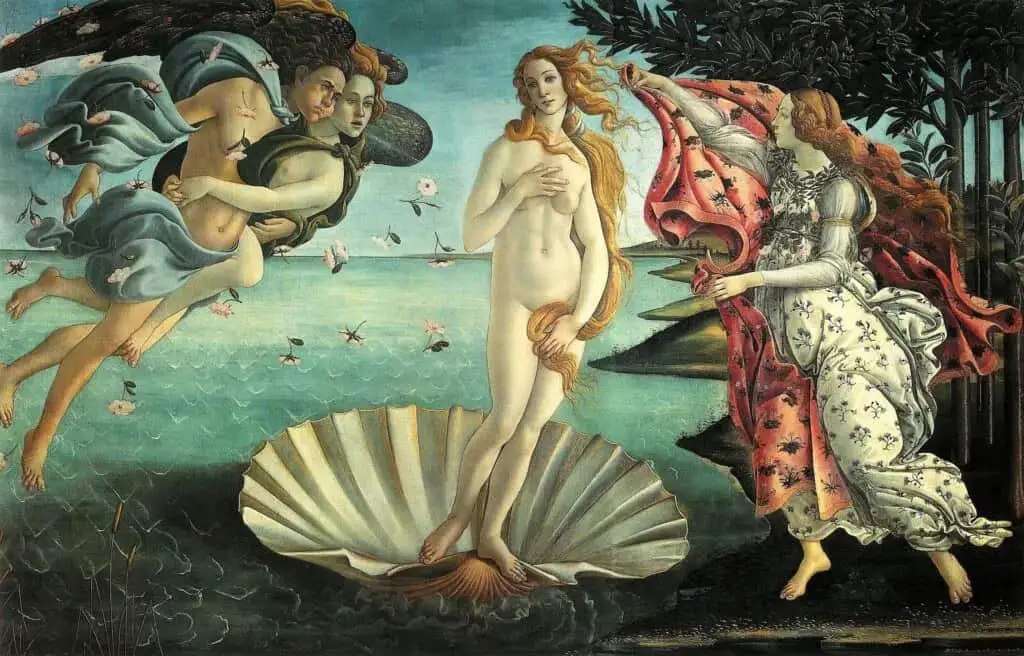
Are you a fellow art lover? Well, so are we. Art is really something special. It has been with us since ancient times. Artworks themselves are timeless, but we can eternalize them with a photo. In this article, we review the best phones for photographing artwork. Our selection includes recommended option, as well as a budget choice.
Carrying a huge camera around is just not convenient. Luckily, there is a much simpler solution. You always have it with you everywhere you go and it fits right into your pocket. That’s right, your phone! Today’s phones have really good cameras, so there is practically no need for you to spend hundreds of dollars on a professional camera.
Whenever you are walking around galleries, museums, or art shows, you will find that a phone is so much easier to handle. You snap a photo and you can edit it on the same device. Moreover, you can share it right away, show it to someone, or enjoy it yourself. There is no other device necessary, just your phone. Additionally, a phone can be used for other stuff as well, not just photography and phone calls. So choosing a good phone is an investment.
DID YOU KNOW: Art used to be an Olympic event. Between the years 1912 and 1948 medals were given out to artists from different fields, such as architecture, music, painting, sculpture, and literature.
NOTE: Below you can find a comparison table and a detailed description of the best phones for photographing artwork.
TOP RECOMMENDED PHONES FOR photographing artwork
| BUDGET | RECOMMENDED | ||||
| Xiaomi Redmi Note 9 | Samsung Galaxy A71 | Huawei Nova 5T | Samsung Galaxy Note20 | Samsung Galaxy S21 Ultra 5G | |
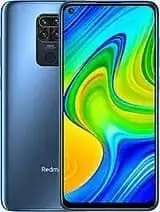 |
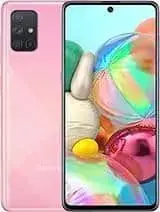 |
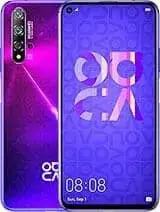 |
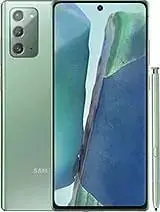 |
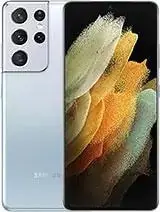 |
|
| Display | 6.53 inches | 6.7 inches | 6.26 inches | 6.7 inches | 6.8 inches |
| Main camera | 48 MP wide, 8 MP ultrawide, 2 MP macro, 2 MP depth | 64 MP wide, 12 MP ultrawide, 5 MP macro, 5 MP depth | 48 MP wide, 16 MP ultrawide, 2 MP macro, 2 MP depth | 12 MP wide, 64 MP telephoto, 12 MP ultrawide | 108 MP wide, 10 MP periscope telephoto, 10 MP telephoto, 12 MP ultrawide |
| Video | max. 1080p@30fps | max. 4K@30fps | max. 4K@30fps | max. 8K@24fps, HDR10+ | max. 8K@24fps, HDR10+ |
| Front camera | 13 MP | 32 MP wide | 32 MP wide | 10 MP wide | 40 MP wide |
| Battery | 5020 mAh, non-removable | 4500 mAh, non-removable | 3750 mAh, non-removable | 4300 mAh, non-removable | 5000 mAh, non-removable |
| Buy on Amazon | Buy on Amazon | Buy on Amazon | Buy on Amazon | Buy on Amazon |
* International and US hardware.
What are the best phones for photographing artwork?
XIAOMI Redmi Note 9
| CUSTOMER REVIEWS |
KEY CAMERA FEATURES
| MAIN CAMERA | FRONT CAMERA | VIDEO |
| Quad with 48 MP wide, 8 MP ultrawide, 2 MP macro and 2 MP depth | Single 13 MP standard | Up to 1080p 30 fps |
PHONE DESCRIPTION
Xiaomi Redmi Note 9 is one of the brand’s cool phones, which sells at a very low price. It has a decent chipset and an extremely good battery life. It also comes with an IR blaster, which a very cool and useful feature that allows you to control certain appliances, like a TV for example. This makes the phone good, despite the low price. After all, there is no need to pay a lot for quality. Therefore it makes our list of the best phones for photographing artwork.
The phone features a quad camera setup. Here you will find one 48 MP main camera with PDAF, 8 MP ultrawide camera, 2 MP macro camera with autofocus, and a 2 MP depth sensor. Daytime shots taken with the main camera are decent. However, the overall quality is behind the competition. Sharpness could be improved and there could be more detail. Therefore images appear a bit softer. Still, the colors look pretty good. Using zoom reduces image quality even more. Photos have more noise and do not come out really sharp. Portraits look more or less good, but only in good light. Low light performance is surprisingly good. Photos have a wide dynamic range with nicely preserved highlights. However, the images are still soft.
Video recording is again not the best. There is no option for 4K videos and you can only record up to 1080p. This is really disappointing as most phones these days support 4K and some even 8K. Videos appear soft and the dynamic range is pretty narrow. There is still a lot of room for improvements in this area.
If you are interested in more details about the phone you can read more by clicking here.
- Very affordable. Great price/performance ratio
- Sleek design makes it Easy to handle and place into pockets
- Even 4 GB model will be able to handle games pretty good
- Fast and accurate autofocus in good light
- The processor chip may be a bit weak for more demanding games. If this will be your primary gaming phone you should consider some higher-end models on this list.
| LEARN MORE | OR | CHECK PRICE |
SAMSUNG Galaxy A71 – Top Budget Phone for photographing artwork
| CUSTOMER REVIEWS |
KEY CAMERA FEATURES
| MAIN CAMERA | FRONT CAMERA | VIDEO |
| Quad with 64 MP wide, 12 MP ultrawide, 5 MP macro and 5 MP depth | Single 32 MP wide | Up to 4K 30 fps |
PHONE DESCRIPTION
Samsung Galaxy A71 is another Samsung mid-range phone. Unlike flagships, this one comes at an affordable price, which is certainly a benefit for your wallet. Furthermore, the phone doesn’t lack anything and is pretty competitive. It has a good-looking design and an excellent mid-range chipset. Based on its quality, we decided to put it on our list of the best phones for photographing artwork.
The cameras you will find here do a pretty good job a well. Galaxy A71 features a quad camera setup, which has an interesting L shape. Here we get a 64 MP main camera with PDAF, 12 MP ultrawide camera, 5 MP macro camera, and a 5 MP depth sensor. Photos taken with the main camera during the day are very sharp, have a wide dynamic range a lot of detail. There is very little, almost zero noise and the colours are more or less accurate. Low light photography looks quite okay. Highlights and shadows look nice and noise is reduced to a minimum. However, switching to an ultrawide camera during the night may reduce photo quality. Macro shots could be improved as well. Many shots come out blurry, because of fixed focus and that could be a little annoying.
As far as video recording goes, you are able to make 4K footages at 30 fps. You can also make videos at 1080p resolution which also looks quite nice and the overall quality is very satisfying. Videos taken during the day have a wide dynamic range, have a lot of detail, and are very sharp.
If you are interested in more details about the phone you can read more by clicking here.
- Performance is smooth thanks to an excellent mid-range chipset
- The price of this device is very attractive
- Great and large screen
- Good camera set for the price point
- Accurate exposure with wide dynamic range
- No wireless charging or reverse charging
| LEARN MORE | OR | CHECK PRICE |
HUAWEI Nova 5T
| CUSTOMER REVIEWS |
KEY CAMERA FEATURES
| MAIN CAMERA | FRONT CAMERA | VIDEO |
| Quad with 48 MP wide, 16 MP ultrawide, 2 MP macro and 2 MP depth | Single 32 MP wide | Up to 4K 30 fps |
PHONE DESCRIPTION
Huawei Nova 5T is one of Huawei’s most beautifully designed and mid-range phones. It looks very similar to Honor 20, so if you are familiar with that phone, using this one will be a walk in the park. Otherwise, the phone has a good chipset and pretty long battery life. It is also very affordable which makes it one of the best phones for photographing artwork.
Huawei nova 5T features a quad camera set up on the back. Here you will find one 48 MP main camera with PDAF, one 16 MP ultrawide camera, one 2 MP macro lens and a 2 MP depth sensor. Camera set up might not be the best feature here, as you can find similar setup on cheaper phones. Still, the image quality is good. Day time photos taken with main camera look okay. They have a lot of detail and sufficiently wide dynamic range with little noise. Night time and low light photos can have reduced quality, although still satisfying. Basic users will probably not have any problem with the quality, however professionals might be bothered with some details, as images tend to be softer.
As far as video recording goes, you do get an option for 4K videos at 30 fps. However, you can always take footages up to 1080p at 30 or 60 fps. In general, video quality is good. There is plenty of detail, little noise and wide dynamic range. Although, if video recording is important to you, you might want to check out some other, but more expensive phones, like Samsung Galaxy S20 Plus.
If you are interested in more details about the phone you can read more by clicking here.
- Highly readable and highly responsive IPS screen, 2340 x 1080 resolution
- Performance is amazing for a mid range phone. It holds its own even against pricier models
- The fingerprint reader works wonderfully and is faster than the Honor 5X
- Battery lasts all day video chatting, gaming and watching videos non-stop
- Good exposure and wide dynamic range in photos
- Does not have a memory card slot. Since there is only 128 GB version available you must decide if that is enough for you
| LEARN MORE | OR | CHECK PRICE |
SAMSUNG Galaxy Note 20 – Recommended phone for photographing artwork
| CUSTOMER REVIEWS |
KEY CAMERA FEATURES
| MAIN CAMERA | FRONT CAMERA | VIDEO |
| Triple with 12 MP wide, 64 MP telephoto and 12 MP ultrawide | Single 10 MP wide | Up to 8K 24 fps |
PHONE DESCRIPTION
Samsung Galaxy Note 20 is a well designed phone with a lot to offer. In terms of performance and other features it definitely one of the top phones to buy. It is a bit smaller than Note 20 Ultra and is also less expensive. It has different camera set up and a slightly smaller battery. However, we still need to treat Note 20 as a high end phone; after all, it still is one of the top choices out there. So without any hesitation, we list Galaxy Note 20 as one of the best phones for photographing artwork.
The camera setup on this phone is fairly similar to the one on Galaxy S20, rather than the one on Note 20 Ultra. Here you get a 12 MP main camera with Dual Pixel PDAF. You also get a 12 MP ultra-wide camera and 64 MP telephoto camera with 3x hybrid zoom. In general, photos taken from the main camera look pretty good. Daytime photos look excellent. The camera captures a lot of detail with almost no noise, so shots are really sharp.
If you are interested in more details about the phone you can read more by clicking here.
- We really like the fingerprint reader on the screen. It’s super fast and accurate
- Multitasking is smooth so it never freezes or slows down.
- Great and large screen. Perfect for playing games, watching videos or scrolling social media or web pages
- Design wise, that phone looks really good. It feels bad putting any covers on it so we recommend only a thin transparent case.
- Excellent ultra-wide and close-range zoom shots
- Under heavy load the battery may get drained quicker then some other phones on this list.
| LEARN MORE | OR | CHECK PRICE |
SAMSUNG Galaxy S21 ULTRA
| CUSTOMER REVIEWS |
KEY CAMERA FEATURES
| MAIN CAMERA | FRONT CAMERA | VIDEO |
| Quad with 108 MP wide, 10 MP periscope telephoto, 10 MP telephoto and 12 MP ultrawide camera | Single 40 MP wide camera | Up to 8K 24 fps |
PHONE DESCRIPTION
Samsung Galaxy S21 Ultra is brand’s showpiece and has some amazing new features. It is an upgrade from regular S21 model, which is actually a cheaper version of this phone. The S21 Ultra is one of the best phones ever to be introduced to the market. This is a high end and well performing device that you would be proud to own. It is definitely one of the best phones for photographing artwork.
As far as the camera abilities go, this phone is definitely a step forward. The S21 features a 108 MP main camera and a 12 MP ultrawide camera. It also has two 10 MP zoom lenses. One supports 3x digital zoom and the other one supports 10x digital zoom. All of the cameras and lenses have amazing autofocus that will allow you to take very sharp photos and will capture a lot of details. The images are high quality and have a wonderful resolution. The colors are amazing and you can even take some incredible low light photos. Additionally, the S21 Ultra features a 40 MP frontal camera that will allow you to take some awesome selfies. The frontal camera is a clear upgrade from other S21 models that have 10 MP frontal cameras.
About the video capabilities, the phone can make some awesome 4K recordings at 30 fps or 60fps. Your videos will be sharp and clear. You can also make 8K videos at 24 fps. For more details click here.
- Super fast and responsive performance thanks to Snapdragon 888
- Great display that is perfect for gaming and everyday use
- Amazing 5000 mAh battery with 25 W charging capabilities, wireless charging and wireless reverse charging
- Lots of RAM that will allow any game to run smooth
- The camera has tons of features and produces amazing results
- Because it is a Samsung product it comes with some preinstalled Samsung ‘bloatware’
| LEARN MORE | OR | CHECK PRICE |
Additional hardware information
Cameras
The phones these days feature multiple-camera setups. In fact, it is very difficult to find a phone with just one camera. Usually, they have at least two in the back and some even feature four. Now there is a logical explanation behind all this. The companies aren’t just stacking cameras left and right. Each camera is different and serves its own purpose. This is how we get the best results and enhance our photography experience. The most common camera types you will find are wide camera, ultrawide camera, telephoto camera, macro camera and ToF sensor.
Wide camera – It is also known as the main camera that we find on the rear side of the phone. You will notice differences in Megapixels that a certain camera has. A good main camera should have at least 12MP. Furthermore, it is also good if it has good autofocus and an optical image stabilizer, also known as OIS.
Ultrawide camera – It offers a wider field of view than the main camera. This way you can capture more into the image and it is more similar to what our eyes see. It can offer a great advantage when taking wider images such as family reunion photos for example. However, sometimes a photo can appear curved due to a wider angle and some objects might appear abnormally shaped.
Telephoto camera – It is normally used for zoomed-in shots that are taken from a distance. You can zoom in on a scene or subject and get closer without actually having to move. This can serve us well when we don’t want to approach the subject. A telephoto lens increases focal length. It brings objects closer to you.
Macro camera – It is used for close-up shots. We can capture images of small objects, such as insects or plants. These objects can appear big in a photo and we can capture a lot of detail. In fact, we can capture things that are too small to be visible to the naked eye.
ToF sensor – It is a piece of equipment that most flagship phones these days have. A ToF sensor can help you determine the distance between the camera and the object. It is actually a depth sensor that helps the phone create a three-dimensional map of the world. It uses infrared light to determine the distance between the objects and maps 3D space.
Dynamic range
The understanding of dynamic range can really help us improve our photos. Dynamic range describes the ratio between the maximum and minimum light intensities. In simple words, it tells us the difference between the lightest and darkest tones in an image. Each device has its own dynamic range, which affects the output – that is our image. The wide the dynamic range, the better. You will stumble across this topic a lot in photography. So just remember that a wider dynamic range gives you better results. A wide dynamic range will allow you to capture more detail in brighter or darker areas. Otherwise, those areas will just appear very bright, nearly white or very dark, nearly black. So to create a good exposure, there must not be too bright or too dim parts.
An interesting fact is that human sight has a relatively high dynamic range. No camera can match it. Therefore some pictures of sunsets for example appear different than they are in real life.
Sharpness
Sharpness in photography stands for the overall clarity of the image. This combines focus and contrast. The subject must be clear, lifelike, and have a lot of details. This is when we can speak of sharpness.
Sharpness is very important in photography. Better sharpness means more detail. Furthermore, it also emphasizes the textures of the subject. You should always try and make your photos as sharp as you can. This way the images will appear more professional and interesting for the viewers.
For the best results, you will have to have good equipment as well as the right technique and well-developed skills. However, with the right gear, it can be much simpler. It is also important to know that sharpness is related to the resolution, as the number of pixels and their size affect overall sharpness.
Resolution
The image resolution relates to the number of pixels that are featured in an image. Higher resolutions simply mean that there are more pixels in the photo, whether lower resolutions mean that there are fewer pixels in a photo. The number of pixels also determines how much information is captured in an image. Or in other words, how much detail it can hold. So, the more the better, as it usually results in higher quality photos.
Changing the resolution, you are basically saying how many pixels you want to have per square inch. So it is always good to have a little more than less. After all, it affects the sharpness of the image as well, and you don’t want blurry photos. You want to capture as much information as you can. Cropping the photo, while keeping the same resolution will significantly drop the quality of the photo. That happens because you remove a certain amount of pixels, which basically means you lose a certain amount of information that should occupy that space. So avoid doing that.
There is a lot of talk about Full HD resolution these days. Here we have 1920 pixels wide and 1080 pixels high image. Such resolution is very common among televisions these days. However, there is also Ultra HD, which is also known as 4K. This means that the resolution here is about 4000 pixels, although is usually a bit less – 3840 pixels.
Contrast
Contrast represents a visual ratio between different tones in an image. It defines color characteristics and affects areas such as highlights, shadows, colors, clarity, and textures. A simple way of putting it is to say that contrast is the scale of difference between black and white in the photo. High contrast means that there will be bright highlights and dark shadows, whether low contrast images have little difference between light and dark tones.
We also know different types of contrasts. There is Tonal contrast, which refers to dark and bright areas in the photo. Then we have Color contrast which means pairing warm and cold colors to make them stand out more. We also know Conceptual contrast, which helps us add depth and encourages viewers to engage with the photo. Then there’s also Texture contrast, where we combine rough and soft elements for an extra punch. All of the contrasts are very important if we want the image to look professional and appealing. So we must know how to use them if we want to achieve that magical result. They can help us tell a story and make certain things stand out more. So we can really be artistic with the contrast.
best phone for photographing artwork – CONCLUSION
As you have learned choosing the best phone for photographing artwork is not a trivial task. The phone cannot compare to a professional DSLR camera with its small sensor size. Therefore, it is important that the sensor quality is at the top level and you will also need to play with some manual camera settings, as standard auto mode usually won’t cut it.
Any phone from our list will give you the best camera experience. So if you stay within our selection of best phone for photographing artwork you are good and ready to go. Have fun taking photos.